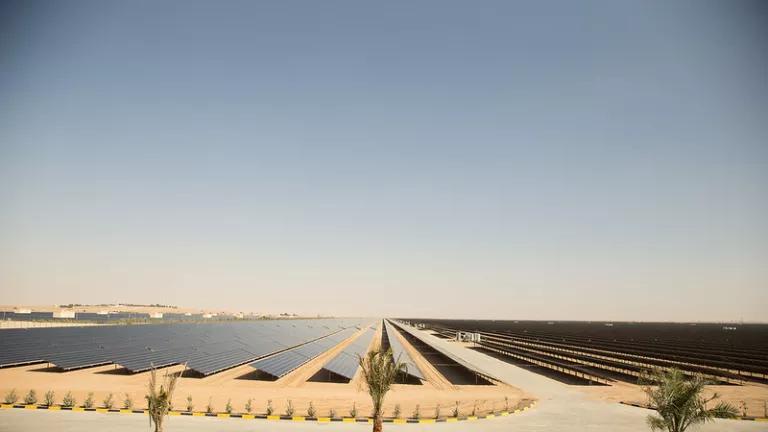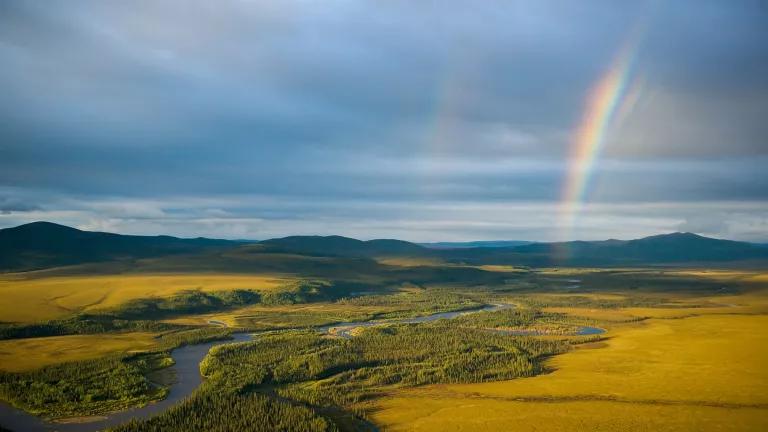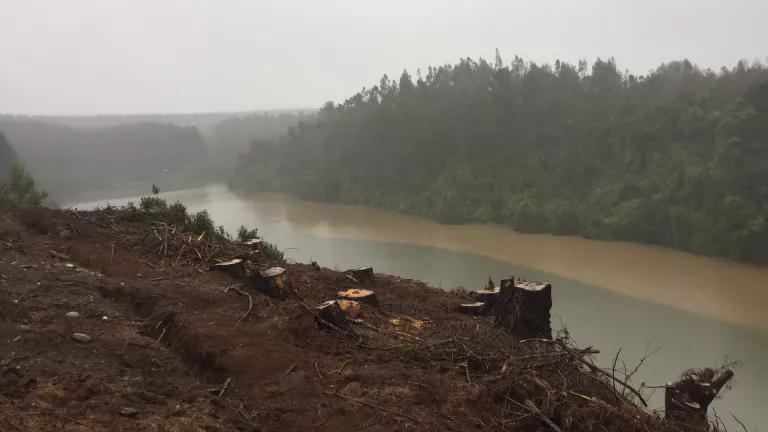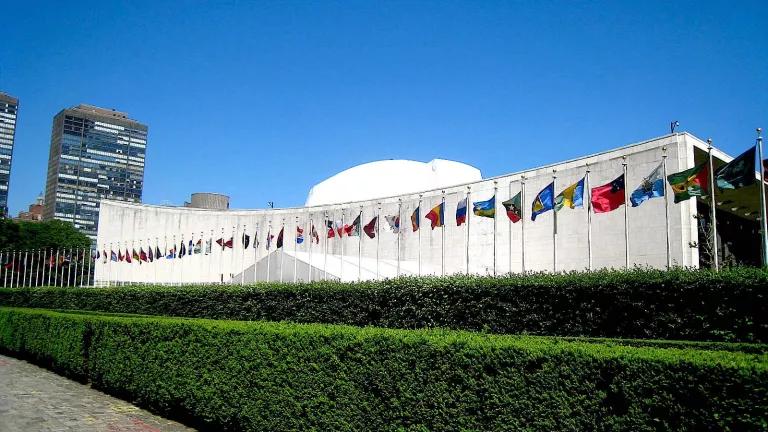
United Nations Building NYC
World leaders are gathering this week in New York City to kick off the 77th United Nations General Assembly and Climate Week, where stakeholders of all types raise awareness of the need to fight global warming. But beyond that, they are also opening the curtain on a season of critical global convenings where major decisions will be made that affect the future of our planet and all people on it. Throughout this fall, NRDC will push for action on finance, the ocean, the northern forests, adaptation, and biodiversity
Remarkably, no fewer than four major summits will be held before the end of the year. All will be crucial moments for governments, business leaders, and other stakeholders to demonstrate their commitment to mitigating global warming, helping people adapt to the climate change impacts, protecting wildlife, and strengthening the natural systems we depend upon for food, water, and security.
The other conferences and summits taking place over the next few months, starting just after the United Nations General Assembly in New York City this week include:
- The Global Clean Energy Action Forum, a joint convening of the Clean Energy Ministerial and Energy Innovation: Sept. 21-23 in Pittsburgh, United States
- The United Nations Framework Convention on Climate Change’s 27th annual Conference of the Parties: Nov. 6-18 in Sharm El-Sheikh, Egypt
- The Annual G20 Summit: Nov. 13-14 in Bali, Indonesia
- Phase 2 of the Convention on Biological Diversity’s 15th annual Conference of the Parties: Dec. 7-19 in Montreal, Canada
The urgency of our situation is very and tragically tangible. Climate change impacts already devastating every corner of the globe. As I write this, islands as far apart as Puerto Rico and Yakushima (Japan’s southern island) are both being battered by “unprecedented,” destructive storms. Biodiversity is at a breaking point.

Pakistan floods - August 2021 vs 2022 in Sindh
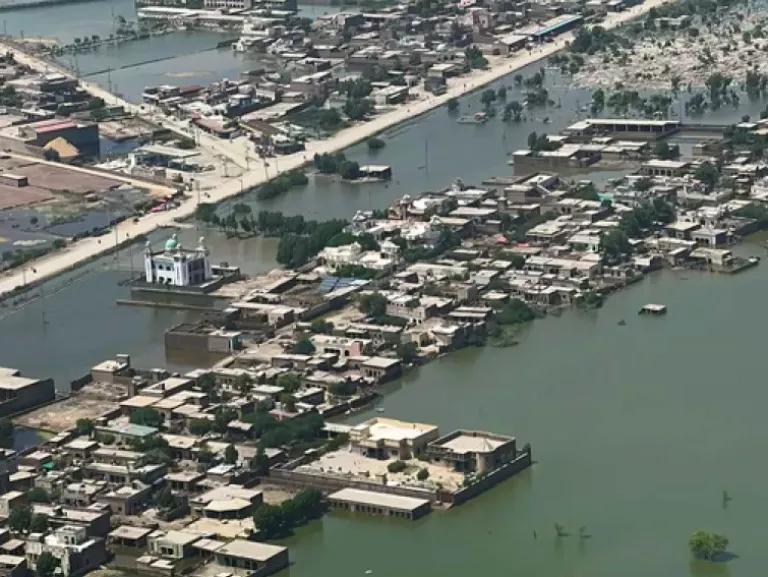
Aerial view of the flood in Pakistan 2022
Ali Hyder Junejo
Several critical actions in key sectors could make a significant difference in how we are able to fight the climate and biodiversity crises we all face.
Finance is a crosscutting theme that is relevant in every single one of these events, and its import cannot be overstated. Every part of the financial sector has a role to play:
- Governments of developed countries, specifically the United States, must do their part to help other countries afford the mitigation and adaptation solutions they need. The United States has emitted 25 percent of global carbon pollution since the Industrial Revolution. Yet it lags far behind other wealthy countries in providing climate finance to the countries who are most vulnerable to climate impacts and least able to pay for resilience measures themselves. In fact, the United States provides less than one-quarter of the $25 billion in annual support that European Union members provide to developing countries for climate action. President Biden has proposed $11 billion in climate assistance for the 2023 budget year. We need the U.S. Congress to approve that level of funding and continue to increase it going forward.
- Multilateral development banks also have a major role to play, with their unique position of being able to leverage their funds to attract private capital to climate and biodiversity solutions in countries around the world. While some of these banks are prioritizing climate finance, others are lagging. The World Bank Group can significantly expand the quality and quantity of its climate finance by increasing the target for the share of its financing with climate co-benefits from 35 percent to 50 percent by 2025. Additionally, it should announce new innovative finance mechanisms such as support for national or subnational green banks to crowd-in private finance, sovereign guarantees for energy transition, risk hedging mechanisms, or other tools.
- Public and private sector actors must end their financing of fossil fuels projects. The world’s 60 largest private banks have given US$ 4.6 trillion for fossil fuels since the Paris Agreement was adopted. And top U.S. banks provided US$ 207 billion to the coal industry from 2019-2021. Even after promising statements at last year’s UNFCCC Climate Conference in Glasgow, governments are reluctant to stop financing natural gas abroad –including liquefied natural gas (LNG) exports from the United States. But more LNG will not help reduce climate emissions or promote long-term energy security. Instead, we need the entire finance sector to invest in innovative tools to foment the growth we need in renewable energy and energy efficiency.
The Ocean is being devastated by climate change—on top of pollution, overfishing, and other human activities. One of the most effective tools to help the ocean recover from these impacts and sustain itself is to create more fully protected marine areas in the high seas. Scientists, environmental groups, and many leaders agree that governments around the world must urgently commit to fully protect 30 percent of the world’s oceans by 2030. The foundation for this level of protection is a new treaty to protect the high seas (the areas beyond the national jurisdiction of any single country). Although this treaty has been under negotiation since 2017, the most recent talks ended in August without a consensus. Governments must finish the negotiations, sign on to, and implement a High Seas Treaty.
Northern Forests receive relatively little attention in the climate sphere relative to their tropical counterparts, but that needs to change. Canada’s Boreal Forest stores twice as much carbon as the world’s oil reserves and is home to hundreds of Indigenous communities and many iconic North American species. Yet the government continues to allow the logging industry to clearcut primary boreal forests at an alarming rate, and as a result Canada has the third-highest intact forest loss in the world after Russia and Brazil. Through several loopholes, the logging industry in particular is allowed to clearcut Canada’s primary intact forests without having to properly accounting for those emissions. If we are to avoid the worst impacts of climate change, we need that carbon to stay in the ground. Canada must close these forest carbon accounting loopholes, regulate its forest carbon emissions, and work with Indigenous leaders to prioritize the most important areas to conserve. Furthermore, countries throughout the Global North should face the same scrutiny for allowing their forests to be degraded and cleared as countries with tropical forests, which are typically in the Global South.
Adaptation is essential. Even as we keep up the fight to reduce emissions, communities around the world must prepare for an already-changing climate. There are no shortage of solutions to the myriad challenges we face, and every community has its own needs. For example, India is preparing for ever more extreme heat with a variety of innovative, yet cost-effective, strategies like national and local cooling action plans, cool roofs, and energy conservation building codes. Yet these kinds of solutions rarely receive much funding. Governments and the financial and private sectors need to ensure that half of global international climate finance goes to adaptation measures.
Biodiversity must receive as much attention and financial support as the more explicit climate change efforts, as scientists make it clear that we must address both of these crises at the same time if we are to be successful at either. One key action we need governments to take – which I mentioned above in The Ocean section as well – is to commit to fully protect at least 30 percent of global land, 30 percent of freshwater, and 30 percent of the Ocean by 2030. Additionally, and specifically at CBD COP15, they must also agree to and implement actions that will halt human-induced extinctions of wildlife and eliminate any wildlife exploitation, use, and trade that drives biodiversity loss or poses a risk of pathogen spillover.
Underscoring all these issues is one constant and fundamental theme: equity. As countries, companies, civil society, and all stakeholders work to fight these twin crises, we must ensure that no one is left behind. That those who are suffering most receive the support and resources they need to meet these challenges head on. And that those who have been historically excluded from these conversations, policymaking, and solutions design are not only included but also at the front of the table.
* * *
These upcoming high-level summits and meetings are opportunities for leaders of all kinds to step up and make the commitments that we need in this urgent hour – and fully implement them. Promises are nice. But they don’t mean anything without real action. Our climate-challenged planet --and all of us who live here--need help now, not tomorrow.


